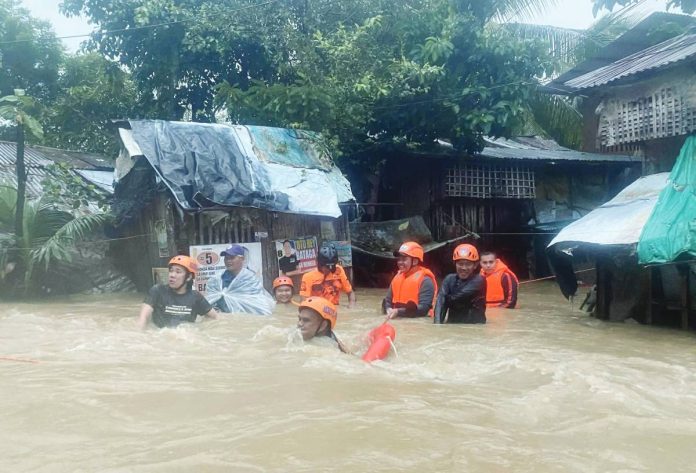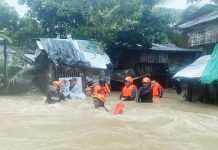
ILOILO – As floodwaters receded and evacuees returned home, the aftermath of Tropical Storm “Ramil” laid bare the province’s weak drainage systems that turned roads into waterways and caused widespread flooding across seven towns.
The Provincial Disaster Risk Reduction and Management Operations Center (PDRRMOC) reported on October 20 that all flooding incidents triggered by the storm had subsided. However, the incident highlighted the urgent need for better flood control and road drainage in low-lying areas.
“As of now, wala na sila sa evacuation centers, nagbalik na sila sa ila houses. Kay in Carles, Balasan, and Estancia are those affected sang pagbaha nga ini,” said retired Police Colonel Cornelio Salinas, head of the Provincial Disaster Risk Reduction and Management Office (PDRRMO).
According to the agency, flooding and landslides affected 50 barangays across six municipalities — Carles, Balasan, Estancia, Lemery, Batad, and San Dionisio — and one barangay in Calinog that experienced a rain-induced landslide.
In total, 12,149 families or about 40,576 individuals were affected.
Among the hardest-hit were low-lying villages in Balasan, Estancia, and Carles, where floodwaters rose rapidly due to poor drainage.
“Kon tan-awon mo, wala man didto sang kabukiran, but amo ni ang ginatawag nga fluvial flooding due to intense rainfall in one particular area, tapos may basins siya wala sang waterways, no better canals,” Salinas explained. “That’s the reason why ang best option sang tubig since blocked na ang waterways are the roads… So, makibot na lang ang pumuluyo nga may baha na kon sa diin naghalin.”
Salinas said the situation revealed a recurring problem — roads built without adequate canals to divert rainwater.
“So the best solutions are improved waterways… in the future, ti, improve better drainage system, cross drainage, amo gid na ang pahanumdom sa aton pamuluyo,” he added.
He also urged residents to heed rainfall advisories, secure valuables in elevated areas, and maintain preparedness even when the province is not under a storm signal.
The disaster official lamented that despite billions spent on flood control, many infrastructure projects remain substandard.
“We should have flood resilient infrastructures, earthquake resilient infrastructures… kay may issue kita subong sang corruption, millions and trillions of flood control, ta’s amo ni ang gakatabo sa pamuluyo naton,” Salinas stressed.
The PDRRMOC continues to monitor weather conditions and has been coordinating with the Office of Civil Defense (OCD) Region VI for ongoing situational updates and post-disaster assessments.
“Everyone should be prepare a grab bag or ‘go bag’ that includes a whistle and other important things in case of emergency,” Salinas reminded./PN






